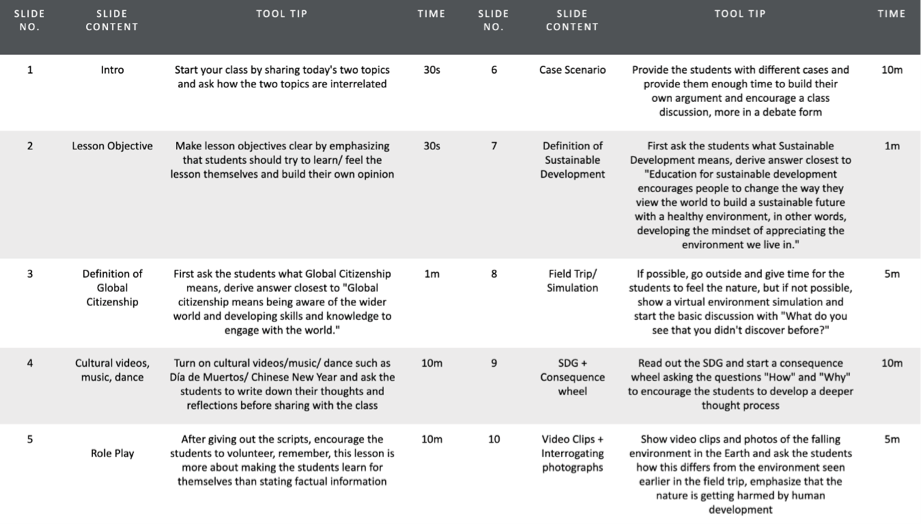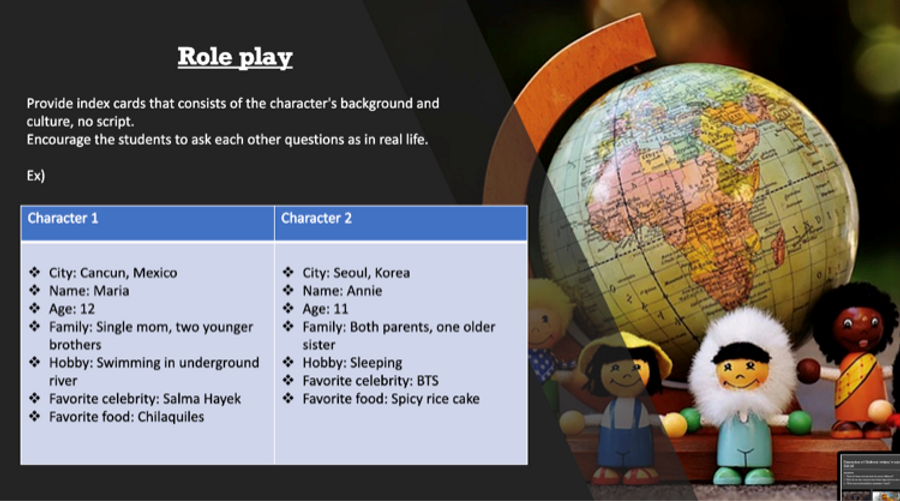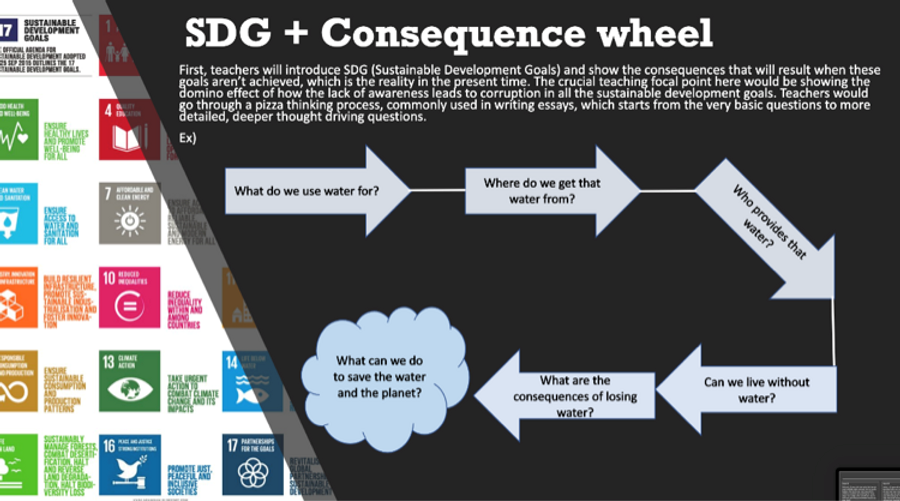Jessica Kim
My module introduces two complementary topics: global citizenship and education for gender equality. Global citizenship means being aware of the wider world and our collective interdependencies and developing skills and cultural empathies to engage effectively with each other. Education for gender equality encourages people to reflect upon and ultimately change how they think, to build a healthier and more harmonious society today, and for the future.
Literature Review
World economies are churning faster and more quickly affecting global citizens in interdependent ways that policy makers call the impact of “galloping globalization.” In this digital revolution where people communicate and interact non-stop 24/7, it is even more urgent to examine what global citizenship means today (Aktas, Pitts, Richards, and Silova, 2017). And as important, how global citizens can work together to achieve progress in the indicators of gender equality outlined by the UN’s SDG’s by 2030 (Kim, and Grabowski, 2019; O’Dowd, 2019).
As the renowned educator John Dewey pointed out, “Education is not a preparation for life, it is life itself.” Teachers and students (including our families and larger communities) together shoulder joint responsibilities to learn and educate ourselves about how we impact the people on the planet with what we door not do. It is even more significant when we become aware of how widespread and deeply rooted the various forms of gender inequality can be. For instance, how women are more likely to be negatively affected by financial crises and the associated diminishment of social security measures; how women are disproportionately employed in sectors with low wage, status, and security; and, how women are significantly more vulnerable to sexual and gender-based harassment and violence (Peppin Vaughan, 2016).
Even more challenging to consider, and to unlearn, are perceived biases we have absorbed from growing up in different societies; with each society having its own ethnic preferences and cultural prejudices. The big challenge is, we must continue to unlearn unhealthy notions (Cho and Mosselson, 2018). To move towards learning constructive new ideas to improve the quality of life not only environmentally, but also emotionally and healthily, so we all get along peacefully to enrich our lives (Toh and Cawagas, 2017).We can do this only by collaborating successfully with practical and safe measures as global citizens. We need to cultivate world citizens who become increasingly aware, are caring, and feel empowered, in wanting to be responsible for our every action (DiCicco, 2016; Katzarska-Miller and Reysen, 2019).
Yet, we must also know we cannot have all the answers, all the time, and all at once (Misiaszek, 2016).We need to be open-minded to ask questions, especially hard questions. To research answers online, from discussing with our peers, neighbors and friends—even agreeing to disagree for the time being if needed, until answers present themselves (Hancock, 2017; Myers, 2016). These are some of the main reasons I have considered while developing this learning module on how we can promote global citizenship inside and outside the classroom. The bigger goal is for never-ending conversations to enlarge our world views as global citizens (VanderDussen Toukan, 2018).
Adopted in 2015, the United Nations Sustainable Development Goals (UN SDGs) aim to achieve sustainability by 2030. It is imperative for everyone to show more appreciation and awareness of our surroundings and in paying attention to the wider world. To ask how: I, as an individual, and we, as a group, can build healthy communities locally and globally, to make lifetimes of impact. (Refer to Image 1.)

I developed the module from a student’s perspective; to consider creative and engaging ways to encourage them to understand these lesson plans they participate in with hands-on learning. This approach will facilitate their understanding and feeling the importance of what global sustainability and equality means individually and collaboratively in impacting larger groups and communities.
For global citizenship, I focused the module on helping students experience the wider world and diversities within community using physically and visually engaging activities. One of the most important elements of global citizenship is identity of self, and how self relates to various shades and forms of diversity. To show various cultures existing harmoniously in different countries, activities include appreciating ethnic music and dance that entertain, and also inspire them to appreciate other international cultures. (Refer to Image 2.)

Another approach encourages students to build their own arguments about different parts of the world. Teachers would show videos of traditional events such as Chinese New Year or Día de Muertos celebrations. After viewing them, students will be asked to share their thoughts. Such as writing down questions of what they discover from individually researching online resources. Furthermore, integrating offline and online research motivates independent research skills through drawing up students’ curiosity. (Refer to Image 2.)
Another engaging activity is role play; students will be given scripts with characters from around the world. By acting out ethnically diverse personas, students would gain and insights regarding global citizenship. Role play activities also enhances effective communication and in valuing diversity, other key elements of global citizenship. (Refer to Image 3.)

In another activity, students act as judges to try cases, to learn another critical characteristic of global citizenship: social justice and equity. They will be introduced to try cases based on discrimination such as gender identity, race, age, disability, marital status, religion, social class. They will be encouraged to freely share their judgement and participate in open debates with their classmates. This will encourage students to become confident in their abilities to manage complex and uncertain information, along with thinking about positive and innovative ways to take informed and reflective action. (Refer to Image 4.)

Having been pinpointed by the UN as priorities in the 2030 Sustainable Agenda, concern for women’s empowerment and commitment to gender equality are crucial components for education in global sustainable development (Miotto et al., 2019). Addressing issues relevant to gender equality through education is particularly important because stereotypical norms about how men and women should behave can be reinforced via school curriculums, methods of teaching, and instructor behavior (Peppin Vaughan, 2016). Two points are vital when approaching this topic. First, gender must be understood as a social construct that shapes expectations and ideas about men and women and the power relations between them, rather than as a matter of mere biology. Second, it is vital to encourage students to recognize that “unequal gender relations and gendered preconceptions” hurt not only women and girls, but men and boys as well (Miotto et al., 2019).
This lesson starts with a screening or reading of scenes that depict typical, commonplace situations with gendered elements that people, both adults and children, experience. Examples could include common interactions and discussions that occur throughout the day at locations including the classroom, home, office, and cyberspace. Students will be given ample time to digest and form their own opinions about what is happening in each situation. Special care should be taken to ensure that examples depicting how men and boys can be harmed by unequal gendered relations are included.
Afterwards, students will be asked to share their thoughts and opinions about what they observed from the scenes. Teachers will join the discussion to point out the inequalities and gendered preconceptions and ideas present in each scene, then link them with the students’ observations. This discussion will enable them to recognize how prevalent gendered preconceptions and unequal power relations between genders are in our society. It will also contribute to students realizing how gender inequality negatively affects everyone.
Thereafter, teachers will describe how the inequalities and gendered norms discussed previously are reflected in the broader context of global sustainable development statistics. Teachers introduce Goal 5 of the UN SDGs (Sustainable Development Goals), its specific targets, and relevant information. Teachers will utilize structured discussions and debates on consequences when these targets aren’t achieved. The crucial teaching focus here is to show the global, sometimes horrific ramifications of the gender inequalities discussed beforehand, and how the SDGs are relevant to eradicating them. Teachers would go through a pizza thinking process, commonly used in writing essays, which starts from asking very basic questions to more detailed, deeper thought driving questions. For instance, teachers start discussions with questions such as “How was the girl expected to behave in this situation?” and progress to “What are the consequences of gendered norms and opinions in society?” to provoke deeper thinking about gendered preconceptions and unequal power relations between men and women. This encourages students to think about the greater consequences of gender inequality. (Refer to Image 5.)

Teachers introduce information about specific examples of gender inequality that sustainable development goals are aiming to eradicate, and how widespread they still are. For instance, teachers can talk about how “49 countries lack laws protecting women from domestic violence” and “husbands can legally prevent their wives from working” in 18 countries (United Nations, n.d., p. 5). Drawing from the theory of cascading domino effects, teachers will next discuss how such gender inequality can be harmful to democracy, economic growth, public health and safety, and the community around the world (S. Klasen, 2002; Stephan Klasen & Lamanna, 2009). Teachers can further explain how such consequences all go against achieving other SDGs, too. Teachers may use pictures and photographs to form a consequence wheel; to ask students “how” and “why” in prompting independent curiosity and research skills.
In discovering the prevalence and consequences of gendered attitudes, students will hopefully take steps towards promoting gender equality, global citizenship, and sustainable development. Students, future leaders of this world, will contribute as individuals and as members of groups to make societies better and healthier places in which everyone, regardless of culture or gender, can live harmoniously and peacefully together. Being a global citizen means moving forward, for everyone to accept, and take conscious action, in making our increasingly interconnected world more pleasant and safe to inhabit.
References
Aktas, F., Pitts, K., Richards, J. C., & Silova, I. (2017). Institutionalizing global citizenship: A critical analysis of higher education programs and curricula. Journal of Studies in International Education,21(1), 65-80. doi:10.1177/1028315316669815
Bamber, P. (ed.) (2019).Teacher Education for Sustainable Development and Global Citizenship: Critical Perspectives on Values, Curriculum and Assessment. Routledge.
Cho, H. S., & Mosselson, J. (2018). Neoliberal practices amidst social justice orientations: global citizenship education in South Korea. Compare: A Journal of Comparative and International Education,48(6), 861-878. doi:10.1080/03057925.2017.1364154
DiCicco, M. C. (2016). Global citizenship education within a context of accountability and 21st century skills: The case of Olympus High School. Education Policy Analysis Archives,24, 1-26. doi:10.14507/epaa.24.2364
Goren, H., & Yemini, M. (2017). Global citizenship education redefined–A systematic review of empirical studies on global citizenship education. International Journal of Educational Research,82, 170-183. doi:10.1016/j.ijer.2017.02.004
Haigh, M. (2016). Fostering Global Citizenship–tree planting as a connective practice. Journal of Geography in Higher Education, 40(4), 509-530. doi:10.1080/03098265.2016.1150438
Hancock, R. E. (2017). Global citizenship education: Emancipatory practice in a New York preschool. Journal of Research in Childhood Education,31(4), 571-580. doi:10.1080/02568543.2017.1346731
Katzarska-Miller, I., & Reysen, S. (2019). Educating for Global Citizenship: Lessons from psychology. Childhood Education,95(6), 24-33. doi:10.1080/00207594.2012.701749
Kim, J., & Grabowski, C. (2019). Learning Global Citizenship through UN Sustainable Development Goals. Retrieved from https://teachingsocialstudies.org/2019/01/04/learning-global-citizenship-through-un-sustainable-development-goals/
Klasen, S. (2002). Low Schooling for Girls, Slower Growth for All? Cross-Country Evidence on the Effect of Gender Inequality in Education on Economic Development. The World Bank Economic Review, 16(3), 345–373. https://doi.org/10.1093/wber/lhf004
Klasen, Stephan, & Lamanna, F. (2009). The Impact of Gender Inequality in Education and Employment on Economic Growth: New Evidence for a Panel of Countries. Feminist Economics, 15(3), 91–132. https://doi.org/10.1080/13545700902893106
Miotto, G., Polo López, M., & Rom Rodríguez, J. (2019). Gender Equality and UN Sustainable Development Goals: Priorities and Correlations in the Top Business Schools’ Communication and Legitimation Strategies. Sustainability, 11(2), 302. https://doi.org/10.3390/su11020302
Misiaszek, G. W. (2016). Ecopedagogy as an element of citizenship education: The dialectic of global/local spheres of citizenship and critical environmental pedagogies. International Review of Education, 62(5), 587-607. doi:10.1007/s11159-016-9587-0
Myers, J. P. (2016). Charting a democratic course for global citizenship education: Research directions and current challenges. Education Policy Analysis Archives,24, 1-19. doi:10.14507/epaa_24.2174
O’Dowd, R. (2019). A transnational model of virtual exchange for global citizenship education. Language Teaching, 1-14.
Oikonomidoy, E. (2016). Critical Cosmopolitan Educational Research: grounded and potentially transformational. Globalisation, Societies and Education, 14(4), 466-476. doi:10.1080/14767724.2015.1069734
Peppin Vaughan, R. (2016). Gender equality and education in the sustainable development goals (ED/GEMR/MRT/2016/P1/7 REV.; 2016 Global Education Monitoring Report). https://unesdoc.unesco.org/ark:/48223/pf0000245574
Stoner, L., Kerr, Z. Y., & Ward, D. S. (2018). Now is not the time for isolationism: integrating global citizenship into higher education for the good of global health. Journal of global health, 8(2). doi:10.7189/jogh.08.020301
Toh, S. H., & Cawagas, V. (2017). Building a culture of peace through global citizenship education: An enriched approach to peace education. Childhood Education, 93(6), 533-537. Doi:10.1080/00094056.2017.1398570
United Nations. (n.d.). Goal 5: Achieve gender equality and empower all women and girls. Retrieved February 9, 2020, from https://www.un.org/sustainabledevelopment/gender-equality/
VanderDussen Toukan, E. (2018). Educating citizens of ‘the global’: Mapping textual constructs of
UNESCO’s global citizenship education 2012–2015. Education, Citizenship and Social Justice, 13(1), 51-64. doi:10.1177/1746197917700909
LINKS
http://www.ideas-forum.org.uk/about-us/global-citizenship
http://news.trust.org/(Thomson Reuters Foundation News)
https://www.globalcitizen.org/en/content/5-facts-about-extreme-poverty-everyone-should-know/
